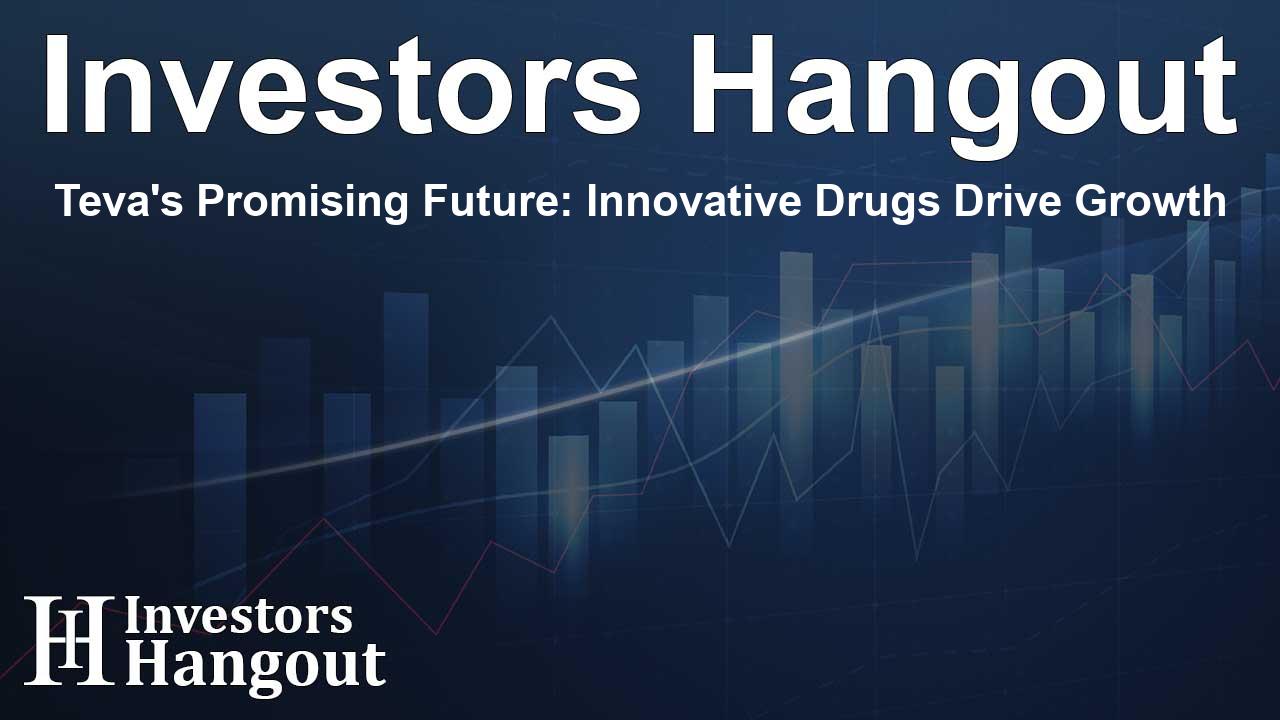Teva's Promising Future: Innovative Drugs Drive Growth

Teva's Financial Performance Overview
Teva Pharmaceutical Industries Ltd. (NYSE: TEVA) recently reported its latest financial results, reflecting the company's evolving strategy in the pharmaceutical market. The company's total revenue reached $4.20 billion, slightly missing analysts' expectations of $4.29 billion. This outcome represents stability year-over-year, but a slight decrease of 1% when analyzed in local currency.
Challenges in Generic Drug Sales
The revenue shortfall for Teva was primarily attributed to lower sales from its generic drug portfolio. The International Markets segment witnessed a decline, exacerbated by the divestment of its operations in Japan and reduced sales from Copaxone. These factors all negatively impacted the overall results.
Strength in Innovative Products
Despite the challenges faced in the generic sector, Teva experienced significant sales growth within its innovative drug segment. Notable contributors to this success include Austedo, Uzedy, and Ajovy, which positively impacted the company's bottom line. In particular, Austedo saw a remarkable 19% increase in sales, amounting to $498 million. Uzedy's sales doubled, nearing $54 million, while Ajovy, a treatment for migraines, posted a 31% increase from the previous year, generating $155 million in revenue.
Performance of Copaxone
However, the company reported that sales for Copaxone, a critical treatment for multiple sclerosis, fell by 23%, contributing only $62 million during the quarter. Nevertheless, the growth from Teva's innovative offerings helped to mitigate the impact of these declines.
Future Outlook for Teva
Looking ahead, Teva has revised its financial guidance for fiscal year 2025, narrowing its adjusted earnings projection to between $2.50 and $2.60 per share, slightly below analysts' consensus of $2.53 per share. Additionally, the company reaffirmed its total sales guidance for the year at around $16.8 billion to $17.2 billion, which is slightly lower than the expected $17.01 billion.
Positive Developments in the Biosimilars Segment
Teva is also seeing strong growth within its biosimilars segment, which is crucial as the company anticipates launching two new biosimilars in the latter half of 2025. Plans are in place to double revenues from biosimilars by 2027, reflecting a commitment to expanding its footprint in this sector.
Adjustments in Earnings and Margins
For the second quarter, Teva reported adjusted earnings of 66 cents per share, exceeding analyst estimates of 62 cents. The adjusted gross profit margin improved to an impressive 54.6%, up from 52.9% in the previous year, showcasing the benefits of a product mix that favors higher-margin innovative medicines.
Leadership Insights
Teva’s President and CEO, Richard Francis, emphasized the importance of the company's innovative portfolio as a catalyst for revenue growth. He stated, “This quarter’s performance demonstrates the strength of our innovative portfolio, contributing significantly to our trajectory and value delivery for patients.”
Strategic Focus and Market Adaptation
During discussions about future strategies, Francis pointed out that a significant portion of Teva's generics operations are now located outside the U.S., while the innovative segments primarily operate within. Teva has also ensured that its supply chain remains unaffected by reliance on Chinese manufacturing, with minimal operations in India.
Management’s Financial Planning
Teva’s Chief Financial Officer, Eli Kalif, confirmed that U.S. tariffs have been integrated into the company’s financial outlook for 2025, underscoring proactive planning against potential market disruptions.
Stock Performance Insights
In market activity, TEVA shares showed a positive trend, trading up by 2.36% to $16.94. This upward movement can be attributed to investor confidence in the company's strategic pivots and its focus on innovative therapies.
Frequently Asked Questions
What are the key drivers of Teva’s recent financial performance?
Teva’s performance has been significantly buoyed by strong growth in its innovative drug portfolio, particularly Austedo, Uzedy, and Ajovy.
How has Teva’s generic drug segment performed?
The generic drug segment faced challenges, with sales decreasing due to lower performance in international markets and the divestment of its Japanese operations.
What is Teva's outlook for the rest of 2025?
Teva expects adjusted earnings to be between $2.50-$2.60 per share, slightly under analyst expectations, yet reaffirming full-year sales guidance of $16.8 billion to $17.2 billion.
What future strategies is Teva considering?
Teva plans to expand its innovative medicines segment significantly, aiming for a $5 billion franchise by 2030, coupled with increasing biosimilars offerings.
How did Teva’s stock react post-earnings report?
Following the earnings report, TEVA stock increased by 2.36%, reflecting positive market sentiment regarding its growth in innovative products.
About The Author
Contact Evelyn Baker privately here. Or send an email with ATTN: Evelyn Baker as the subject to contact@investorshangout.com.
About Investors Hangout
Investors Hangout is a leading online stock forum for financial discussion and learning, offering a wide range of free tools and resources. It draws in traders of all levels, who exchange market knowledge, investigate trading tactics, and keep an eye on industry developments in real time. Featuring financial articles, stock message boards, quotes, charts, company profiles, and live news updates. Through cooperative learning and a wealth of informational resources, it helps users from novices creating their first portfolios to experts honing their techniques. Join Investors Hangout today: https://investorshangout.com/
The content of this article is based on factual, publicly available information and does not represent legal, financial, or investment advice. Investors Hangout does not offer financial advice, and the author is not a licensed financial advisor. Consult a qualified advisor before making any financial or investment decisions based on this article. This article should not be considered advice to purchase, sell, or hold any securities or other investments. If any of the material provided here is inaccurate, please contact us for corrections.
